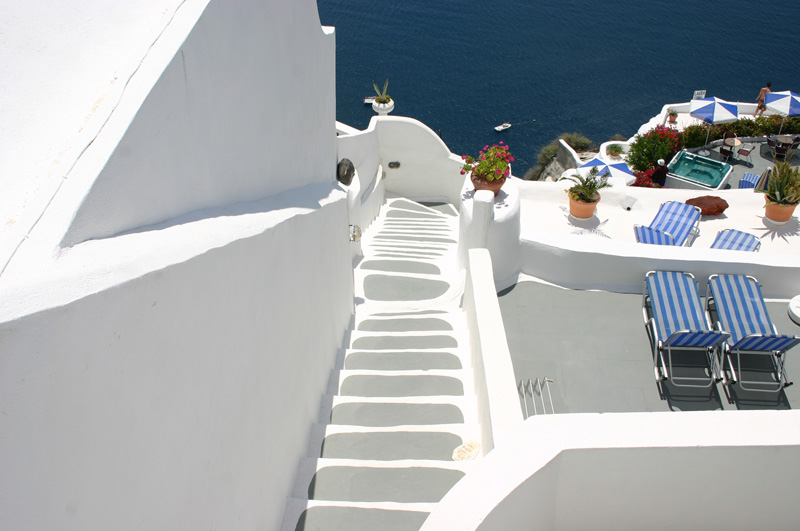Santorini
Clickk here for the real story on Santorini

Santorini - It has been said that the sunsets in Santorini are the best in the world. From the Caldera breathtaking views of the volcano & neighbouring islands. From the east, miles of dark sandy or pebbled beaches. Everywhere one sees small domed churches and remnants of days gone by. Human presences on the island seem to have existed since the middle of the 3rd millennium B.C.

The excavations at Akrotiri have confirmed that human activity on the island continued until the eruption of the volcano around 1500 B.C, which entirely buried the island beneath very thick layers of pozzuolona. At that point, all traces of human activity vanished from the island until the end of the 13th century B.C. According to Herodotus, the island was initially called Strongyle (the Round One). Then later, because of its beauty, it was named Kalliste (the Fairest One). The Phoenicians settled in Kalliste, and after the Phoenicians, the Lacedaemonians arrived and renamed the island after their leader, Theras.

In the 9th century B.C. Thera, became an important stopping point of that era in the travel routes between the East and the West. The Phoenician alphabet was adopted at this time for writing in the Greek language. Interestingly though, the conservative Therans, did not follow the cultural development of their counterparts in the other Cycladic islands. At about 630 B.C the Therans reached the north coast of the African continent where they founded Cyrene, the only Theran colony. In Hellenistic times the island's strategic position made Thera an important base for the war campaigns in the Aegean of the successors to Alexander the Great.